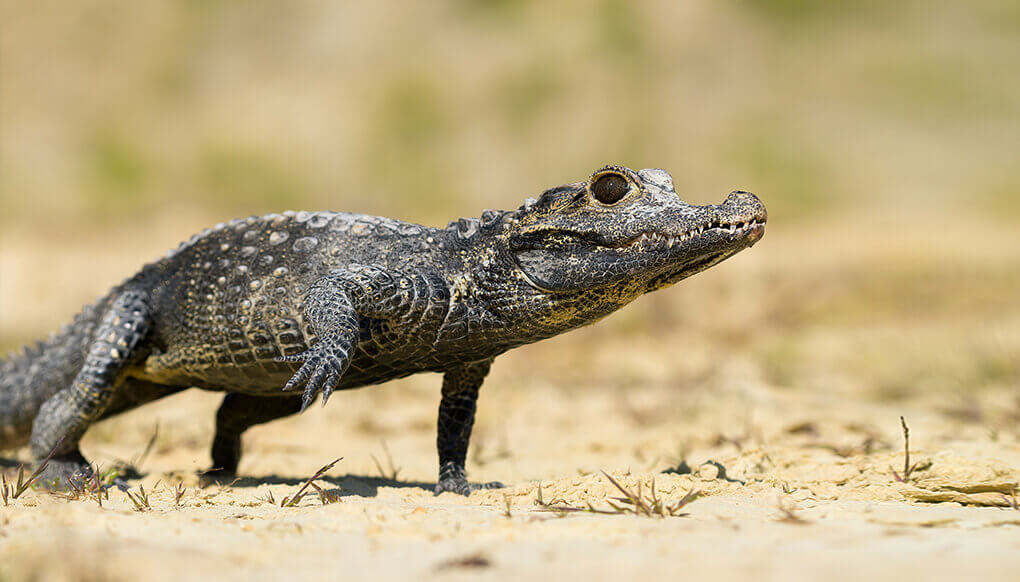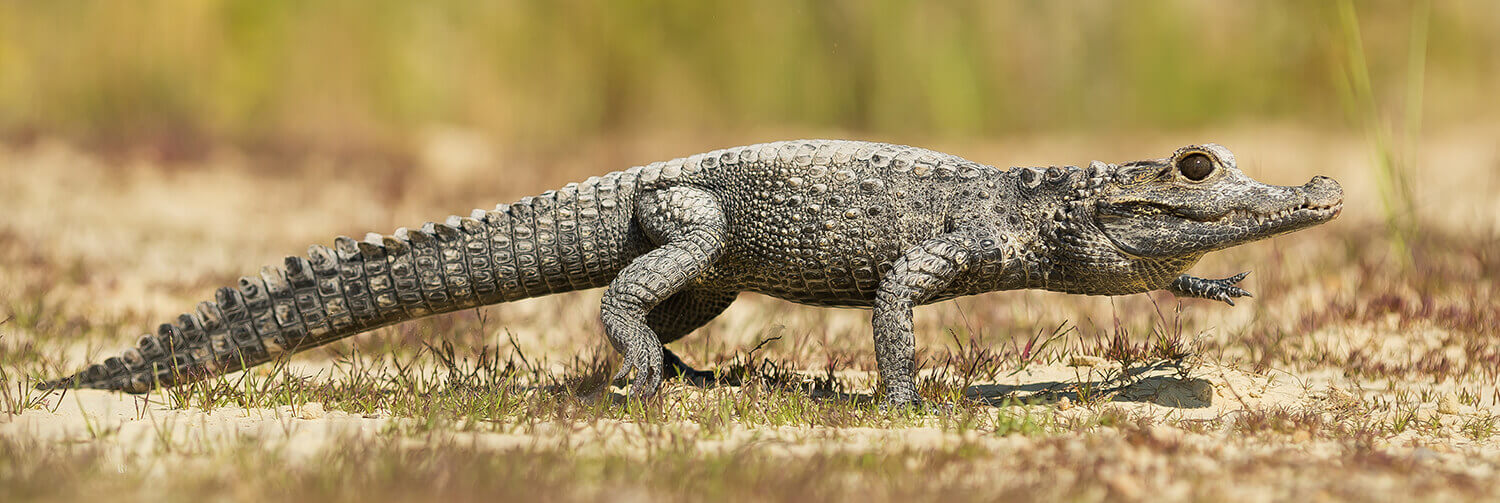The dwarf crocodile commonly identified by the alternate names – the African dwarf crocodile, bony crocodile, or broad-snouted crocodile is basically an African crocodile which is found to be the smallest existing crocodile species.
Latest sampling has analyzed three genetically diverse populations. There are some people who consider that the findings must raise the subspecies to full species status.
Dwarf Crocodile Facts and Information
- There are mainly two known species of Dwarf Crocodile animal and they are the West African Dwarf Crocodile and the Congo Dwarf Crocodile which vary slightly in their location, and also in their behaviour and appearance.
- Dwarf Crocodiles are typically observed in portions of their natural range; however, their numbers in others have fallen chiefly because of hunting and habitat loss.
- The major threats posing this species encompass habitat destruction as well as hunting for meat for consumption.
- Data amassed from Congo depict that tens of thousands of these crocodiles are traded for food over the local markets every year
- All through history, these crocodiles have been feared as well as respected by community. The conventional Egyptians considered that crocodiles were actually a river god that needs to be mollified by the yearly sacrifice of a gorgeous virgin.
- The animals dig burrows inside river banks in order to rest.

Dwarf Crocodile Diet
Dwarf crocodiles are generalist predators, feeding on a wide range of small animals such as crabs, fish, gastropods, frogs, insects, water birds, lizards, and bats.
Also read:
Habitat
They are distributed in different countries but with varying numbers in West Africa including Cameroon, Congo, Nigeria, Sierra Leone, Senegal, Ghana, Gambia etc. Dwarf crocodiles commonly dwell from plain to mid-altitude within slow moving rivers, streams, pools, swamps, and mangroves.
However, they usually stay away from main sections of big rivers. Majority of their range is inside tropical regions, though it may widen into more open areas where the river or streams are well-shaded. Different to majority of crocodiles, dwarf crocodiles seldom bask in the sun. In the night, they transfer to land, few distances away from water.

Behaviour
The dwarf crocodile is essentially a timid and nocturnal animal that spends its day concealed in burrows or pools; though it rarely stays active during the daytime. Due to their nocturnal nature, the animal digs out a hole in which to conceal and rest inside it during the daytime, which can occasionally have an underwater entrance.
Lifestyle
The animals are nocturnal and usually they spend solitary lifestyle. They usually hunt for tiny prey inside the water as well as on the river banks during the night. During the daytime, they take rest in burrows which are excavated underground of the river bank as well as they are accessed via entrance and exit channels of few meters in length. If they fail to find a convenient burrowing site, they would hide amongst sunken tree roots that suspend into the water.
Lifecycle
Young crocodiles usually stay with their mother throughout the initial few weeks of their lifespan. Their lifecycle is around 15-20 years and they attain sexual maturity during the age of 4 to 5 years.

Predators
The major threat for Dwarf Crocodiles within their natural range is people, mainly in the manner of habitat damage for timber and to utilize the land for agriculture comprising of making huge farm of oil palms. Names of their other predators are large birds, mammals and crocodiles.
Breeding
Dwarf Crocodiles tend to breed during the start of the wet season when a male crocodile will mate with many female crocodiles that share his region. The female crocodiles later create a nest by dragging decaying vegetation together in order to prepare a mound where female animal lays up to 20 eggs.
Appearance
The maximum length of the animal seen is 1.6 meters and till now, the biggest known individuals attained a maximum length of 1.9 meters. Their body is of black color with a yellowish base and is secured by strong, resistant scales which not only defend it from harm but even defend them from getting scorched by the sun.
Their nostrils and eyes are positioned on the top side of their heads to allow the animal to watch and breathe whereas the remaining body part is submerged, enabling it to look for predators completely hidden.
Life Span
Dwarf crocodiles could survive 75 years in the wild.
Also read:
Health Issues
The animal sometimes faces issue with heart ailments. Also, due to their small size, their tails are prone to damage and infections. In few of these crocodiles, breathing issues have been found.
Dwarf Crocodile Characteristics
- Due to the tiny size and sharp vulnerability to predation, these crocodiles possess deeply armoured neck, tail, and back. They too have osteoderms on their abdomen and below the neck.
- Shy by nature, these crocodiles are slow moving animal and do not prefer to lie around as other crocodiles do.
- They are basically a cold-blooded type of animal which means that they need to sunbathe to heat their body to provide it the energy to pursue, and dive in the water to cool down the body.
- While they are in the water, crocodiles descend their bodies underneath the surface by keeping their nostrils and eyes on ground so they are capable to conceal from possible preys and trap unwary prey.
- The tiny size and non-aggressive type of nature of the animal lets its capture and move relatively simple, and hence it is the greatest heavily hunted crocodile present in the region.
- The dwarf crocodile generally nests in mounds of plants around water, and it is mainly dependent on the heat produced by the decomposing vegetation to hatch its tiny clutch of eggs.
- They hatch up to 20 eggs simultaneously.






